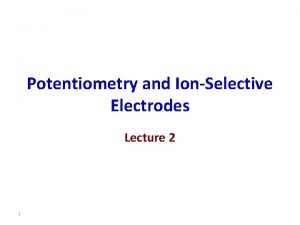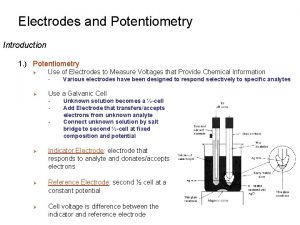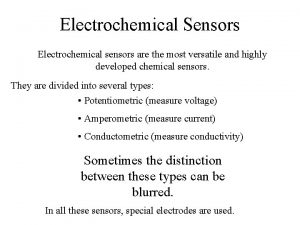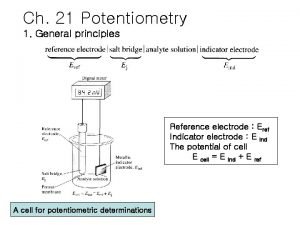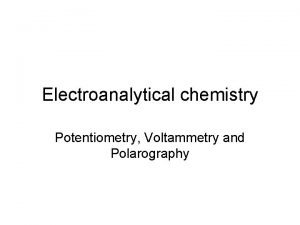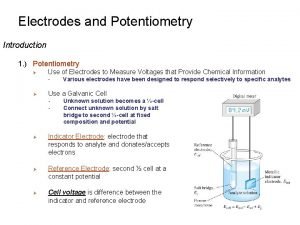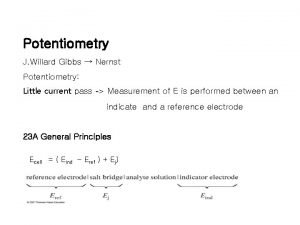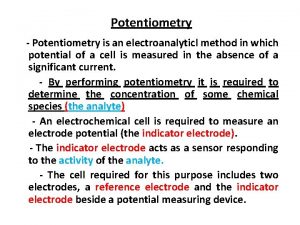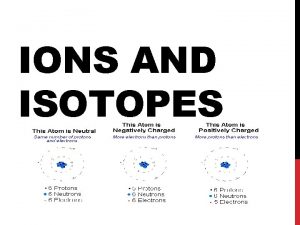POTENTIOMETRY Potentiometry Potentiometry is quantitative analysis of ions








- Slides: 8

POTENTIOMETRY

Potentiometry • Potentiometry is quantitative analysis of ions in the solution using measured potentials in an electrochemical cell formed with a reference electrode and a suitable indicator electrode. • Potentiometry is an electrochemical analysis method that can be applied where a suitable colored indicator is not possible (for example, in dark or very dilute solutions). This method can also be used for the analysis of two or more different components.

Reference and indicator electrode • Indicator electrode potentials cannot be measured absolutely, but the potential difference between them is measured by comparing the potential of the reference electrode.

Reference Electrode: • It is potentially stable and is not affected by the applied external potential. • An ideal reference electrode should have the following characteristics: 1. It should be reversible and suitable for Nerst equality 2. There is a potential that does not change with time. 3. It turns back to the original potential after being exposed to a small current 4. It should not be affected by temperature change.

Indicator Electrode (Working Electrode): • Indicator electrodes are the ones whose potential changes in accordance with the solution composition and they are used with reference electrode. • The potential of the electrode is influenced and changed by the applied external potential. • Membrane electrodes (glass electrode, ion selective electrodes etc. ) and metal electrodes are examples of indicator electrode.

Electrochemical Cells • Each cell is composed of two semi-cells on which reduction and oxidation occur. Each half cell is called an electrode. The electrode on which reduction occurs is called cathode, and the electrode on which oxidation occurs is called anode.

Electrochemical Cells • An anode or a cathode reaction never can walk alone; there is an oxidation in the presence of a reduction or a reduction in the presence of an oxidation. In this way, electron current can be generated. In order for a current to flow through a cell, the electrodes must be connected to each other by a metallic conductor from outside, and the solutions in the two cells must be in contact with each other, which is provided by a salt bridge.

Potentiometric Titration: • Potentiometry is an electroanalytical method which is also used in titration processes. In this method, titration is performed without using an indicator. Because there is no suitable indicator for the titration of some substances and it can degrade in the environment. • In the potentiometric titration; the measured potential or p. H is plotted against the volume of the titrant. The first and second derivatives of the titration curve are calculated so that the equivalence point can be determined more clearly
 Positive ions and negative ions table
Positive ions and negative ions table Which cell is used in potentiometry
Which cell is used in potentiometry Ion-selective potentiometry involves
Ion-selective potentiometry involves Potentiometry vs amperometry
Potentiometry vs amperometry Potentiometry introduction
Potentiometry introduction Difference between conductometry and potentiometry
Difference between conductometry and potentiometry Direct potentiometry principle
Direct potentiometry principle Polarizable and non polarizable electrode
Polarizable and non polarizable electrode Conductometric titration
Conductometric titration


